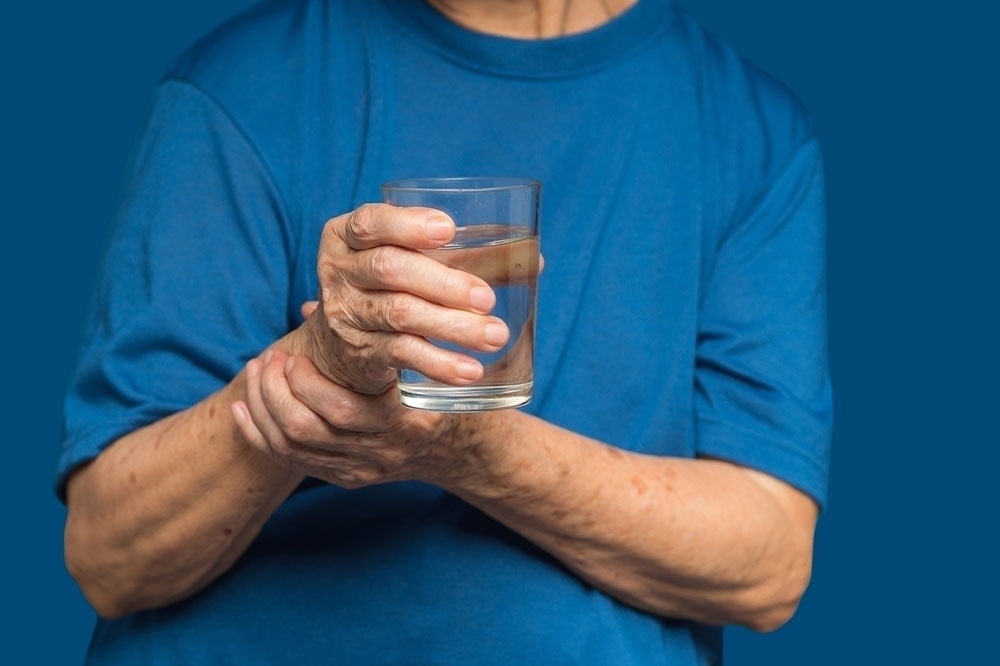11 early signs of Parkinson’s to never ignore

Parkinson’s is a neurological disorder that primarily disrupts communication from the brain resulting in uncontrolled and unexpected movements. It affects specific neurons that carry the signals and impulses from the brain to control vital organs and functions. Parkinson’s is progressive disorder, and there is no cure for the condition yet. However, knowing and identifying many early symptoms is beneficial to improve the outlook on living with the condition. Here are 11 early warning signs to never ignore.
Tremors
Resting tremors are among the first warning signs of developing Parkinson’s. These tremors are not noticeable when the person is using the hand but show up as soon as it is in a more relaxed position. The uncontrolled shaking starts with the thumb and progresses to affect the entire hand.
Severe rigidity
The rigidity of the muscle groups and joints also indicates developing Parkinson’s problems. These discomforts significantly impact simple day-to-day actions like buttoning up shirts, picking up objects, or gripping things in general. These symptoms are even more problematic when combined with the tremors that develop on and off abruptly. Such muscle problems can deeply impact a person’s psyche as well.
Balance issues
Parkinson’s also impacts a person’s balance as it interferes with the brain and body’s coordination to send and receive signals that control gait. This symptom usually affects a person’s ability to control the speed and intensity of their movements, triggering a loss of balance. Movements could be either too quick (hypokinesia) or too slow (bradykinesia) without any control whatsoever.
Changes in posture
Parkinson’s, being a progressive disorder, can worsen existing problems causing muscle stiffness and rigidity. The posture becomes more stooped as Parkinson’s affects vital nerve communications that control the muscles and joints to maintain correct posture. This further increases the risk of falls and significantly impacts daily routine.
Reduced automatic actions
There are many automatic reflexes that the brain controls right from simple but important tasks like breathing, swallowing, blinking, or even adjusting the focus to improve vision. Parkinson’s interrupts the communication of signals that control these automatic reflexes impacting the simplest tasks.
Changes in speech
Voice modulation becomes problematic with progressing Parkinson’s. So, patients often develop changes in speech that are quite noticeable and distinct. Talking in a monotonous voice or low volume are noticeable changes that persist. One might also have trouble finishing sentences legibly, stutter, or even slur trying to pronounce common words.
Trouble with expressions
Besides speech impairment, Parkinson’s also impacts the fine gross motor skills that control facial muscles for proper expression. Patients lose the ability to control their responses and may inadvertently trigger muscle reflexes for the wrong emotional response. These abrupt changes can be incomprehensive and utterly unrelated to the situation.
Changes in handwriting
With poor gross motor and fine skills, changes in handwriting are also a progressive sign of developing Parkinson’s. Patients notice their handwriting getting smaller and smaller, or the alphabets are grouped too close to read properly. This condition is called micrographia, often resulting from bradykinesia or hypokinesia movements.
Sleep discomforts
Tremors, restless leg syndrome, and poor muscle control are all discomforts that deeply affect one’s sleep quality. Parkinson’s patients may also lose sleep over nightmares and subconscious triggers that are not under their control. This affects the duration and consistency of a good night’s rest. Further, daytime fatigue sets in because of a lack of sleep.
Loss of smell
Loss of smell is an unusual symptom that does indicate early on that there is a possible risk of developing Parkinson’s. It might be years before a person realizes and understand the severity of the symptom linked to the condition that hasn’t fully progressed yet.
Digestive issues
Lack of muscle control impacts vital digestive organs like the intestines and rectum, making it difficult to pass stools resulting in constipation. Even the bladder is affected, and one might experience incontinence that forces them to relieve themselves urgently and frequently. These are clear signs of disrupted communication between the brain and vital organs.
Note that there is no specific pattern for developing symptoms. It’ll greatly vary from person to person and is also influenced by the intensity of the disease progression. However, symptoms should not be left unchecked, as many of these discomforts increase the risk of underlying health complications linked to the disorder. While there is no cure for the condition, it is still possible to manage most of the early signs and discomforts with prompt diagnosis and intervention.






